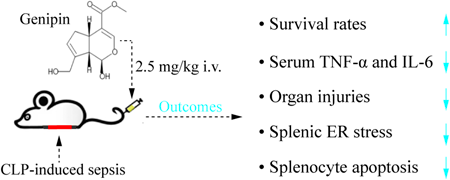2 0 0 0 OA Anthropogenic Heat Release: Estimation of Global Distribution and Possible Climate Effect
- 著者
- Bing CHEN Li DONG Guangyu SHI Li-Juan LI Liang-Fu CHEN
- 出版者
- Meteorological Society of Japan
- 雑誌
- 気象集誌. 第2輯 (ISSN:00261165)
- 巻号頁・発行日
- vol.92A, pp.157-165, 2014 (Released:2014-11-05)
- 参考文献数
- 32
- 被引用文献数
- 10 32
The estimation of the distribution of global anthropogenic heat release (AHR) from 1992 to 2009 was obtained by applying Defense Meteorological Satellite Program (DMSP)/Operational Linescan System (OLS) satellite data. The results indicate that global AHR was geographically concentrated, essentially correlating to economic activities. The anthropogenic heat flux concentrated in the economically developed areas, such as East Asia, Europe, and Eastern North America, reached a level high enough to influence regional climate. In contrast, the anthropogenic heat flux in vast areas, such as Africa, Central and North Asia, and South America, is very small. With the increases in global population and economic development, an increase in AHR was easily found. The model results show that AHR has a significant impact on surface temperature and that it is able to affect global atmospheric circulation, leading to a 1-2 K increase in the high-latitude areas of Eurasia and North America. The results show that AHR is able to affect global climate despite being limited to a region. Although the influence to global warming by AHR is not as large as greenhouse gases, such as carbon dioxide, on a global scale, AHR is an important factor in global climate change that should not be ignored.
- 著者
- Ning Luo Gui-bing Chen Teng Zhang Jie Zhao Jing-nan Fu Ning Lu Tao Ma
- 出版者
- The Pharmaceutical Society of Japan
- 雑誌
- Biological and Pharmaceutical Bulletin (ISSN:09186158)
- 巻号頁・発行日
- vol.46, no.2, pp.187-193, 2023-02-01 (Released:2023-02-01)
- 参考文献数
- 47
- 被引用文献数
- 1 3
Endoplasmic reticulum (ER) dysfunction is characterized by ER stress, which can be triggered by sepsis. Recent studies have reported that lessening ER stress is a promising therapeutic approach to improving the outcome of sepsis. Genipin is derived from gardenia fruit, which is a traditional Chinese medicinal herb for anti-inflammation. Here, mice were treated with genipin (2.5 mg/kg) intravenously to assess its biological effects and underlying mechanism against polymicrobial sepsis. Furthermore, the present study focused on detecting the levels of ER stress-related proteins, including protein kinase R-like ER kinase (PERK), glucose-regulated protein of 78 kDa (GRP78), phosphorylated-eukaryotic initiation factor 2α (p-eIF2α), and CCAAT/enhancer binding protein (C/EBP) homologous protein (CHOP). The results demonstrated that genipin significantly decreased the serum concentrations of tumor necrosis factor-α and interleukin-6, alleviated histopathological damage to the lungs, livers and spleens, and even improved the survival rates of septic mice. Moreover, sepsis significantly upregulated the protein expression levels of splenic GRP78, PERK, p-eIF2α and CHOP, but their levels were significantly suppressed by genipin. Furthermore, genipin also significantly downregulated cleaved caspase-3 expression levels and reduced sepsis-induced splenocyte apoptosis. In conclusion, genipin potentially improved the survival rate of sepsis and attenuated sepsis-induced organ injury and an excessive inflammatory response in mice. The effects of genipin against sepsis were potentially associated with decreased splenocyte apoptosis via the attenuation of sepsis-induced ER stress to further inhibit ER stress-induced apoptosis.
- 著者
- Bing Chen Le Kang
- 出版者
- JAPANESE SOCIETY OF APPLIED ENTOMOLOGY AND ZOOLOGY
- 雑誌
- Applied Entomology and Zoology (ISSN:00036862)
- 巻号頁・発行日
- vol.40, no.3, pp.437-446, 2005 (Released:2005-11-25)
- 参考文献数
- 43
- 被引用文献数
- 25 25
This study investigated the cold tolerance of a laboratory-reared population and latitude-separated populations of the leafminer Liriomyza sativae in China in terms of low-temperature survival rate and supercooling capacity. Pupae of the laboratory-reared population are susceptible to freezing temperatures. The supercooling point of the pupae varied at a maximum of up to 10°C among the geographic populations. Both acclimation of the pupae at 5 and 10°C significantly increased the cold survival rate of laboratory-reared and field-collected populations. But the field population had a more active response to the same acclimation regime. Combining the experimental data with previous field investigations, the −2°C isotherm of the minimum mean temperature of January was proposed as the leafminer's over-wintering range limit. Meanwhile, with the widespread availability of greenhouses as a source of re-infestation in northern China, the leafminer's natural border of distribution should be determined by the minimum temperature in warm seasons. Our results suggest that biologically similar Liriomyza species may cope with the intensifying cold stress along the latitude by adopting a mixed cold-tolerance strategy, which is closely associated with the greenhouse microhabitats. The physiologically based modeling of the over-wintering limit provides a tool for guiding the management for greenhouse pests and predicting the source of pest infestation.
